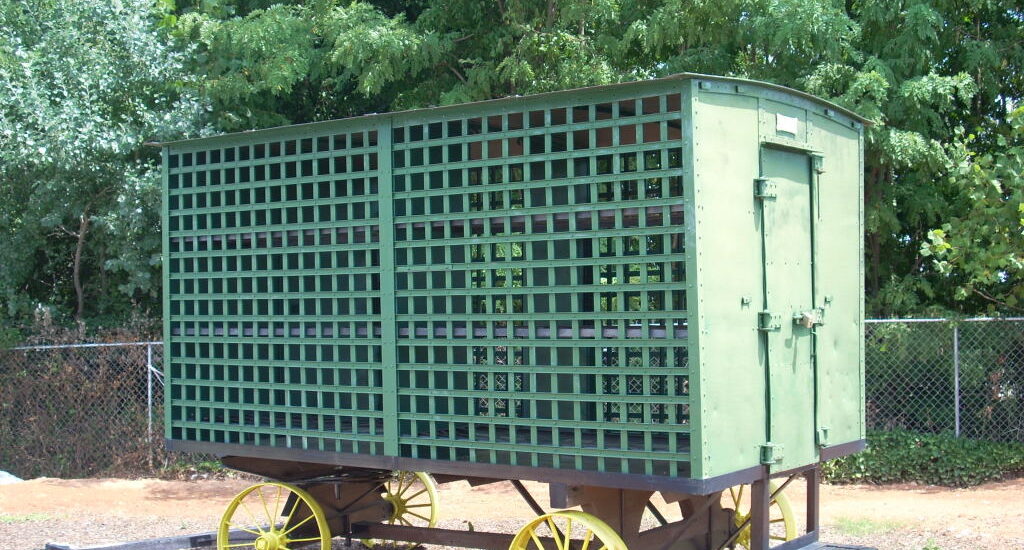As you approach the Oconee County Cage in Walhalla, South Carolina, take a moment to imagine the clattering of chains and the harsh clang of metal against metal. This mobile jail, built around 1900, offers a window into a challenging era of criminal justice in the American South. Known as a ‘jail on wheels’, the Oconee County Cage was a pivotal part of the county’s chain gang system, where prisoners were housed and transported in cages like this one while they worked on public projects like road repairs.
The cage, now preserved as a historical artifact, was a stark reminder of the conditions faced by convicts in the early 20th century. Made of solid sheet metal with barred sides, it housed prisoners who were sentenced to hard labor, often for minor offenses. The cage was approximately 14 feet long, fitted with metal bunk beds, and a central barrel for warmth during cold nights. Despite these grim accommodations, some saw this system as an improvement over previous punitive measures.
In a period marked by racial segregation, the chain gangs were also segregated. Reports from 1915 show that African-American and white prisoners were kept in separate cages and camps. The meals were basic, often consisting of bacon, biscuits, cabbage, and cornbread. Yet, amidst these harsh conditions, there were moments of humanity—families could visit on weekends, bringing food and company to their loved ones.
As you stand here, consider the broader historical context: the chain gang system was a reflection of the social and racial dynamics of its time. It highlighted the intersection of justice, labor, and race relations in the South. The Oconee County Cage, now a part of the Oconee Heritage Center, serves as a poignant reminder of these past injustices and the evolution of the penal system in America.
While the cage itself no longer serves its original purpose, it stands as a testament to the resilience and complex history of those who were once confined within its metal bars. The stories of the individuals who lived, worked, and suffered here continue to echo through time, urging us to reflect on our past and learn from it.



